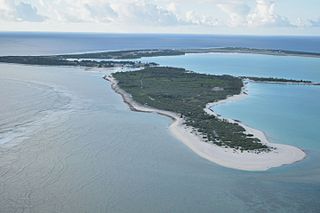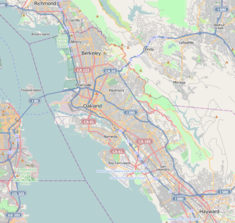
Pan American World Airways, originally founded as Pan American Airways and commonly known as Pan Am, was an American airline that was the principal and largest international air carrier and unofficial overseas flag carrier of the United States for much of the 20th century. It was the first airline to fly worldwide and pioneered numerous innovations of the modern airline industry, such as jumbo jets and computerized reservation systems. Until its dissolution on December 4, 1991, Pan Am "epitomized the luxury and glamour of intercontinental travel", and it remains a cultural icon of the 20th century, identified by its blue globe logo, the use of the word "Clipper" in its aircraft names and call signs, and the white uniform caps of its pilots.

San Francisco International Airport is an international airport located in an unincorporated area of San Mateo County, California, United States, about 13 miles (21 km) south of San Francisco. It has flights to points throughout North America and is a major gateway to Europe, the Middle East, Asia, and Oceania.

China Clipper (NC14716) was the first of three Martin M-130 four-engine flying boats built for Pan American Airways and was used to inaugurate the first commercial transpacific airmail service from San Francisco to Manila on November 22, 1935. Built at a cost of $417,000 by the Glenn L. Martin Company in Baltimore, Maryland, it was delivered to Pan Am on October 9, 1935. It was one of the largest airplanes of its time.

The Boeing 377 Stratocruiser was a large long-range airliner developed from the C-97 Stratofreighter military transport, itself a derivative of the B-29 Superfortress. The Stratocruiser's first flight was on July 8, 1947. Its design was advanced for its day; its relatively innovative features included two passenger decks and a pressurized cabin. It could carry up to 100 passengers on the main deck plus 14 in the lower deck lounge; typical seating was for 63 or 84 passengers or 28 berthed and five seated passengers.

The Boeing 314 Clipper was an American long-range flying boat produced by Boeing from 1938 to 1941. One of the largest aircraft of its time, it had the range to cross the Atlantic and Pacific oceans. For its wing, Boeing re-used the design from the earlier XB-15 bomber prototype. Twelve Clippers were built, nine of which served with Pan Am.
A clipper is a fast sailing vessel, generally from the 19th century.

Edwin Charles Musick was chief pilot for Pan American World Airways and pioneered many of Pan Am's transoceanic routes including the famous route across the Pacific Ocean, ultimately reaching the Philippine Islands, on the China Clipper.

The Sikorsky S-42 was a commercial flying boat designed and built by Sikorsky Aircraft to meet requirements for a long-range flying boat laid out by Pan American World Airways in 1931. The innovative design included wing flaps, variable-pitch propellers, and a tail-carrying full-length hull. The prototype first flew on 29 March 1934, and, in the period of development and test flying that followed, quickly established ten world records for payload-to-height. The "Flying Clipper" and the "Pan Am Clipper" were other names for the S-42.

The Pacific Clipper was a Boeing 314 Clipper flying boat, famous for having completed an unplanned nearly around-the-world flight in December 1941 and January 1942 as the California Clipper. Aviation experts called the flight the first commercial circumnavigation of the globe because the aircraft made it back to its country of origin.

Naval Air Station Alameda was a United States Navy Naval Air Station in Alameda, California, on San Francisco Bay.

The Martin 156, referred to in the press variously as the "Russian Clipper", "Moscow Clipper", or "Soviet Clipper" was a very large flying boat aircraft intended for trans-Pacific service. The single example of the M-156 was designed and built in response to a request from Pan American World Airways to provide a longer-range replacement for the Martin M-130.

The Martin M-130 was a commercial flying boat designed and built in 1935 by the Glenn L. Martin Company in Baltimore, Maryland, for Pan American Airways. Three were built: the China Clipper, the Philippine Clipper and the Hawaii Clipper. All three had crashed by 1945. A similar flying boat design called the Martin 156) and named Russian Clipper, was built for the Soviet Union; it had a larger wing and twin vertical stabilizers.

Pan Am Flight 7 was a westbound round-the-world flight operated by Pan American World Airways. On November 8, 1957, the Boeing 377 Stratocruiser 10-29 serving the flight, named Clipper Romance of the Skies, crashed in the Pacific Ocean en route to Honolulu International Airport from San Francisco. The crash killed all 36 passengers and eight crew members.

Wake Island Airfield is a military air base located on Wake Island, which is known for the Battle of Wake Island during World War II. It is owned by the U.S. Air Force and operated by the 611th Air Support Group. The runway can be used for emergency landings by commercial jetliners flying transpacific routes and has been used in the past by airlines operating jet, turboprop, and prop aircraft on scheduled flights.
The Naval Air Transport Service or NATS, was a branch of the United States Navy from 1941 to 1948. At its height during World War II, NATS's totaled four wings of 18 squadrons that operated 540 aircraft with 26,000 personnel assigned.

Pan Am Flight 1104, trip no. 62100, was a Martin M-130 flying boat nicknamed the Philippine Clipper that crashed on the morning of January 21, 1943, in Northern California. The aircraft was operated by Pan American Airways and was carrying ten US Navy personnel from Pearl Harbor, Hawaii, to San Francisco, California. The aircraft crashed in poor weather into mountainous terrain about 7 mi (11 km) southwest of Ukiah, California.

Pan Am Flight 526A, a Douglas DC-4, took off from San Juan-Isla Grande Airport, Puerto Rico, at 12:11 PM AST on April 11, 1952 on a flight to Idlewild International Airport, New York City with 64 passengers and five crew members on board. Due to inadequate maintenance, engine no. 3 failed after takeoff, followed shortly by engine no. 4. Nine minutes after takeoff, the aircraft ditched in rough seas 11.3 miles NW of San Juan Airport, broke apart and sank after three minutes. Panicking passengers refused to leave the sinking wreck. 52 passengers were killed, and 17 passengers and crew members were rescued by the USCG. After this accident it was recommended to implement pre-flight safety demonstrations for over-water flights.

Hawaii Clipper was one of three Pan American Airways Martin M-130 flying boats. It disappeared with six passengers and nine crew en route from Guam to Manila, on July 28, 1938.

Honolulu Clipper was the prototype Boeing 314 flying boat designed for Pan American Airways. It entered service in 1939 flying trans-Pacific routes.

Peale Island is one of three islands in the Wake Island atoll, which lies in the Pacific Ocean between Guam and Midway. The atoll was from 1935 the site of a seaplane base and a hotel built by Pan-American, who started the first transpacific passenger service using a string of islands across the Pacific to fly between America and Asia in stages. The island, like the rest of Wake, is made of coral fragments and sand, atop a seamount, and ringed by a living coral reef. The island is heavily forested with tropical scrub, trees, and grasses and is inhabited mainly by birds, rats, and hermit crabs. In the late 20th century, it was the site of a United States Coast Guard Loran Station, supporting radio navigation prior to satellite systems. The island is home to many historical items, including the Pan-American Hotel and remnants of World War II, such as bunkers and a rusted 8-inch coastal defense gun.




















